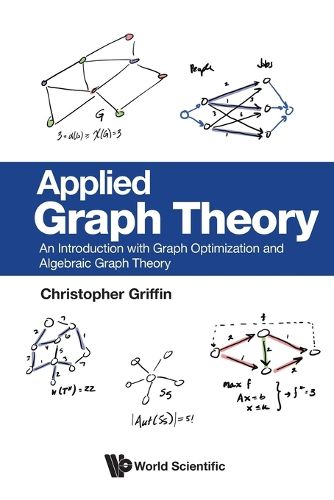Readings Newsletter
Become a Readings Member to make your shopping experience even easier.
Sign in or sign up for free!
You’re not far away from qualifying for FREE standard shipping within Australia
You’ve qualified for FREE standard shipping within Australia
The cart is loading…






This title is printed to order. This book may have been self-published. If so, we cannot guarantee the quality of the content. In the main most books will have gone through the editing process however some may not. We therefore suggest that you be aware of this before ordering this book. If in doubt check either the author or publisher’s details as we are unable to accept any returns unless they are faulty. Please contact us if you have any questions.
This book serves as an introduction to graph theory and its applications. It is intended for a senior undergraduate course in graph theory but is also appropriate for beginning graduate students in science or engineering. The book presents a rigorous (proof-based) introduction to graph theory while also discussing applications of the results for solving real-world problems of interest. The book is divided into four parts. Part 1 covers the combinatorial aspects of graph theory including a discussion of common vocabulary, a discussion of vertex and edge cuts, Eulerian tours, Hamiltonian paths and a characterization of trees. This leads to Part 2, which discusses common combinatorial optimization problems. Spanning trees, shortest path problems and matroids are all discussed, as are maximum flow problems. Part 2 ends with a discussion of graph coloring and a proof of the NP-completeness of the coloring problem. Part 3 introduces the reader to algebraic graph theory, and focuses on Markov chains, centrality computation (e.g., eigenvector centrality and page rank), as well as spectral graph clustering and the graph Laplacian. Part 4 contains additional material on linear programming, which is used to provide an alternative analysis of the maximum flow problem. Two appendices containing prerequisite material on linear algebra and probability theory are also provided.
$9.00 standard shipping within Australia
FREE standard shipping within Australia for orders over $100.00
Express & International shipping calculated at checkout
This title is printed to order. This book may have been self-published. If so, we cannot guarantee the quality of the content. In the main most books will have gone through the editing process however some may not. We therefore suggest that you be aware of this before ordering this book. If in doubt check either the author or publisher’s details as we are unable to accept any returns unless they are faulty. Please contact us if you have any questions.
This book serves as an introduction to graph theory and its applications. It is intended for a senior undergraduate course in graph theory but is also appropriate for beginning graduate students in science or engineering. The book presents a rigorous (proof-based) introduction to graph theory while also discussing applications of the results for solving real-world problems of interest. The book is divided into four parts. Part 1 covers the combinatorial aspects of graph theory including a discussion of common vocabulary, a discussion of vertex and edge cuts, Eulerian tours, Hamiltonian paths and a characterization of trees. This leads to Part 2, which discusses common combinatorial optimization problems. Spanning trees, shortest path problems and matroids are all discussed, as are maximum flow problems. Part 2 ends with a discussion of graph coloring and a proof of the NP-completeness of the coloring problem. Part 3 introduces the reader to algebraic graph theory, and focuses on Markov chains, centrality computation (e.g., eigenvector centrality and page rank), as well as spectral graph clustering and the graph Laplacian. Part 4 contains additional material on linear programming, which is used to provide an alternative analysis of the maximum flow problem. Two appendices containing prerequisite material on linear algebra and probability theory are also provided.